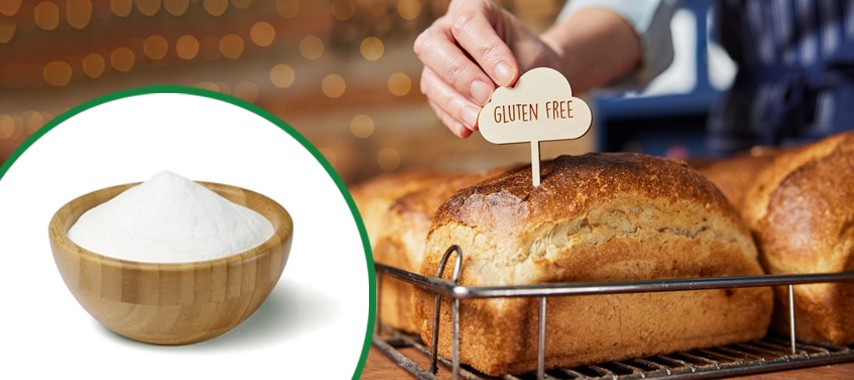

Published on Sep 22nd, 2023

In an era marked by tremendous advancements in food technology, rice protein emerges as a silent hero in the world of health and nutrition. While it may appear to be a simple component, it has created a stir among health-conscious consumers. Its transformation from simple rice grains to a high-quality food-grade protein is fascinating. Understanding the amazing mechanism behind rice protein creation can explain why it has gained the interest of health-conscious people in a world where nutritional choices are being scrutinized closely.

High-quality rice protein production is an innovation of science and nature. From the careful selection of specialized rice strains, termed "protein rice," to the complexities of protein extraction and purification, each step demonstrates human ingenuity and a commitment to providing wholesome and nutritious products.
Rice protein, in particular, has grown as a nutrient-dense and environmentally friendly protein. But what goes into making high-quality food-grade rice protein? Let's explore the intriguing process of producing this vital plant-based protein source.
The process of creating high-quality food-grade rice protein begins with a critical step: carefully selecting the ideal rice variety. Because not all varieties of rice are suitable for protein extraction. The rice variety selection is critical since it is the foundation for the entire production process of Food-grade rice protein.
Here's why this choice is critical: We want rice that has a good level of protein and a great taste and texture. Consider it a quest for the optimal mix of nutrition and palatability.
We usually resort to high-protein choices like brown rice to find high-quality rice. When looking for premium rice, we often gravitate towards varieties high in protein, with brown rice being a prime example. Brown rice is distinguished by having a higher protein content than other rice. Nonetheless, our search for the best rice does not stop with brown rice; we also investigate specific rice strains that have been rigorously selected for their protein-rich qualities.
After selecting the best rice variety, the production process moves on to the next essential step: harvesting and thorough cleaning operations. This stage is critical in the process of creating high-quality food-grade rice protein.
The harvest is a highly organized operation, timed to coincide with the rice's peak of maturity. These precise timings ensure the rice grains contain the highest potential protein content.
Following harvest, the rice is thoroughly cleaned. Attention to detail is essential here. The purpose is to remove any pollutants that may have developed during the rice's growing and harvesting periods. Dust particles, debris, and even broken grains are carefully eliminated, leaving only the purest, highest-quality rice grains.
After rigorous cleaning, the following process is milling and dehulling. This stage is critical because it lays the groundwork for extracting the protein-rich treasure trapped within the rice grains.
The cleaned rice grains, now free of contaminants such as dust and dirt, are milled. Consider this a precise and controlled grinding procedure. The goal is to remove the tough outer hull, which acts as a protective shell around the rice kernel. Milling gradually peels away the outer layer of rice.

Dehulling is a critical phase in this process. It's like peeling fruit to reveal the delicious part inside as the rough outer covering of the rice is removed. The rice's protein-rich center is found after removing the outer layer. This protein-rich portion can produce high-quality rice protein. Maintaining its integrity during the dehulling process is critical to ensure that it is not harmed.
Let's get to the heart of this complicated process: protein extraction. This phase is truly crucial to the production of rice protein. While there are several techniques for extracting protein from rice, the wet extraction procedure is one of the most widely utilized and effective.
In this procedure, it begins with the rice kernel, the very basis of protein supply. To begin the extraction, the rice kernel is immersed in water. This soaking technique serves to prepare the rice kernel for the next step.
Once adequately soaked, the rice kernel is mechanically processed, which requires specialized technology. The goal is to methodically separate the protein from other components found in the rice kernel, such as carbs and fats.
Specialized filtration systems are used within the controlled environment of the manufacturing site. These systems are similar to natural cleaners in our environment, such as crystal-clear streams. The motive is to remove any pollutants that have found their way into the protein.

The concentrated liquid is left after effectively separating the contaminants from the protein. This liquid needs concentration to improve the protein content and potency even more.
The protein level is increased by condensing the liquid, ensuring that the final product is a nutritional powerhouse. This thorough filtering, separation, and concentration process is required to produce high-quality food-grade rice protein.
The step of precipitation and drying is important to get a potent and adaptable form. A slight alteration is introduced through heat or acid to increase the protein content. This modification acts as a catalyst, causing a tremendous transformation. It causes the protein to thicken, causing it to separate from the liquid phase.
Quality control is essential in the production of high-quality food-grade rice protein. Samples are collected at various stages of production and tested rigorously to ensure they match the purity, protein content, and flavor requirements.
After passing all quality checks, the rice protein suppliers in the USA, professionally packed the rice protein powder in food-grade containers to ensure freshness and quality. It is then ready to be sent to makers of various food and beverage goods.
Rice protein has risen worldwide as consumers find healthier, environment-friendly health solutions. Rice protein is beneficial for health-conscious people and contributes to healthy living by protecting the environment from hazardous farming.
BackBe the first to know about new products, events and offers.